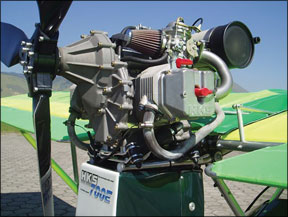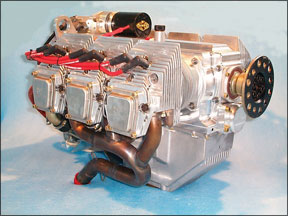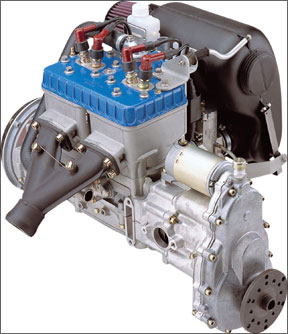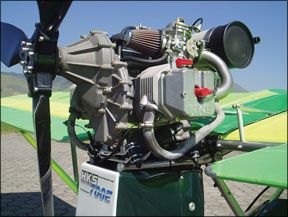Aircraft engines these days come in a lot more flavors and configurations than they used to, thanks largely to the advent of two forms of alternative aviation: most recently, the light sport aircraft (LSA) market and, much earlier, the 1990s surge in experimental/amateur kit-built aircraft. Where some of the more-popular experimental designs and several legacy-S-LSA models employ familiar powerplants, the majority fly with engines from BRP-Rotax in Austria, HKS in Japan and Jabiru in Australia. Who are these companies and whats their track record in making flying-machine engines? How do they compare to the 288 “traditional,” FAA-certified offerings from Continental and Lycoming? Who sets the standards? And whats their safety record? Better? Worse? Different? These newer engines can spur concerns among ardent fans of the familiar, tried-and-true air-cooled flat aircraft engines from Textron Lycoming and Teledyne Continental Motors. Often, it seems, those concerns grow out of unfamiliarity. The differences in care and feeding and in systems fuels debates about their reliability and, in turn, safety of the newer engines. In fact, all engines have their pros and cons, whether youre talking about one of Austrias now-mature offerings or something new from an old-line domestic maker. Many of these points can be categorized as neither purely “good” nor totally “bad”-theyre merely different. As for their relative safety, well, thats a little hard to accurately rate. Given that the vast majority of, for example, Rotax engines fly in experimental/amateur-built aircraft, what at first appears as an engine-related accident or incident often turns out to be a problem caused by something a builder did: a poor engine mount or an improperly mounted accessory that precipitates a failure, total or partial. Also, some of these engines are not heavily represented in the fleet, making any statistically defendable numbers difficult, as well. Adding to the confusion, some of these engines, or variants, meet the FAAs FAR 33 standards for aircraft powerplants, further complicating any accurate assessments. LSA Engine Qualifications Engines for special light-sport aircraft, or S-LSAs, can be of one of two types: either spark-ignition reciprocating design or compression-ignition models-turbines need not apply. Regardless of the ignition source and like S-LSAs in general, they must meet the consensus standards developed by the aviation community and the FAA under the auspices of ASTM International, an organization developing and publishing voluntary technical standards for a wide range of materials, products, systems and services. An exception is any suitable FAR 33-approved powerplant, as reflected by the original 100-horsepower TCM O-200 present in several popular models, as well as some FAR 33-approved Rotax 912 engines. So far, engines meeting the ASTM standards include spark-ignition models from Rotax, Jabiru and HKS along with a compression-ignition -diesel-engine from the U.K.s Wilksch Airmotive. In the wings, so to speak, is an S-LSA-specific engine from the folks down in Mobile, Ala. The HKS700E HKS is well-known and highly regarded in its home country as a designer, 288 manufacturer and supplier of high-technology racing engines, turbochargers, plus other accoutrements for automotive and motorcycle racing. Starting about a decade ago, HKS spent three years developing a horizontally opposed four-stroke twin sporting several advanced touches to help it make 60 horsepower and 51 pounds of torque-decent output for its 680cc displacement. Among the HKS700Es sophisticated touches are its four valves per cylinder, dual capacitive discharge ignition and an integral 210-watt, 12-volt alternator. For smoother running, the engine uses torsional shock absorption in the integral reduction drive. The sum of these touches serves to simplify maintenance: no external mags or alternator to break, throw a belt or slip out of adjustment. Weight with muffler, oil tank to feed the dry-sump system and oil comes in at a respectable 121 pounds. The engine is also quite frugal, burning less than 2.5 gph at cruise power. Rotax 582 AND 912 Models A few years ago Bombardier spun off engine maker Rotax, as well as its snowmobile and personal watercraft lines to a new company, BRP-Rotax. In the aviation world, Rotax is known for its successful light-aircraft engines. The two-cylinder, two-cycle 582UL displaces 580 cc, develops 65 horsepower, and uses liquid cooling for its in-line cylinders and heads. Oil injection, CDI ignition and an integral alternator eliminate the worries that can accompany add-on accessories. But Rotaxs 800-pound gorilla has long been the 912 series, four-cylinder, four-stroke boxer mills with air-cooled cylinder barrels, liquid-cooled heads, CDI and integral alternators. The company makes S-LSA-compliant versions in 81- and 100-hp models. The company also makes FAR 33-approved versions of the 912 used in a couple of primary-category aircraft, such as the Rans S-7S Courier. On both the 582 and 912 lines, torsional dampeners in the propeller-speed reduction drives help smooth out the power pulses before they reach the prop. And the reduction drives come in a couple of different ratios to suit the application for each engine. The Jabiru 2200 and 3300 The engines closest in configuration to the Continental and Lycoming engines known, loved and loathed by thousands of pilots come from Australian manufacturer Jabiru. 288 Both the 85-horse 2200, a four, and the 120-horse 3300, a six, are horizontally opposed direct-drive engines-like a “traditional” Lycoming or Continental-but with much of the same sophistication of the HKS and Rotax mills. For example, both Jabirus employ integral dual transistorized mags for ignition, an integral alternator and a single altitude-compensating carburetor feeding all cylinders. Fuel burn for the 2200 is just under 4 gph and under 7 gph for the 3300. Both are light for their power, at 138 pounds and 178 pounds, including exhaust and oil cooler. TCM O-200 and O-200D Teledyne Continental Motors pulled an upset, in the minds of many, when Cessna Aircraft named TCMs 100-hp O-200D as the powerplant of choice for the upcoming 162 SkyCatcher LSA. And not without reason. The little Continentals familiarity-carburetion, dry-sump lubrication system and direct-drive prop-holds a lot of appeal to many mechanics, shop owners and flight-school proprietors. The O-200 already powers a number of S-LSA models, such as the Legend Cub and AMD Zodiac. To compete for Cessnas new LSA SkyCatcher, however, TCM put the O-200 on a diet, shedding 30 pounds and resulting in the O-200D. The companys Web site shows the engine with dual magnetos, a gear-driven starter and alternator, and a carburetor. Details on how they accomplished the weight loss remain unavailable. So, how safe are they? A review of NTSB accident records indicated 159 accidents between 1982 and 2007 involving aircraft powered by Rotax. And as youd expect, a fair number of those involved much of the same-old-same-old causes youd find examining general aviation accidents-fuel starvation, VFR into IFR conditions, loss of control, carb icing, runway loss of control. But reports also cited engine problems, some with no discernable explanation. Gearbox issues have occurred and reoccurred with the Rotax models, and recently the company issued a mandatory service bulletin regarding checking the magnetic plug for metal chips and for proper lubricant. Accidents involving the other engines were far fewer-only three, for example, involving Jabiru-power; none cited the engine as a causal factor. The higher number involving Rotax-powered aircraft is understandable since Rotax has thousands more engines in service than the other manufacturers combined. The great problem in identifying engine-specific problems is that in the majority of installations, the engines power experimental/amateur-built category aircraft, where differences in mounting, accessory placement, cooling and vibration variations can instill issues that vary from one installation to another. And accidents involving Continental O-200-powered craft were as numerous as youd expect for the length and depth of its presence in general aviation aircraft. Here again, many occurred through no fault of the engine. Still, numerous reports involved engine stoppages, heat-related power loss and other engine problems. Fuel starvation, poor maintenance, failure to observe operating limitations and some power losses lacking explanation populate the reports for both the conventional and unconventional engines. To paraphrase the words of one long-time Rotax service-center operator, the main problems involving the engines stem from many of the same types of problems-poor judgment, misuse, mismanagement and poor maintenance-befalling all aircraft. MAXI from mini LSAs are, by definition, minimum aviation. But many of the 80-plus designs approved as S-LSAs as of this writing sport systems different enough to warrant model-specific training. Operating and maintaining these powerplants, whether mainstream like the TCM O-200 or from HKS, Jabiru or Rotax, requires no less model-specific knowledge. Gearboxes, for example, while largely maintenance-free, do wear and demand periodic inspection for lube level and signs of wear. Rotax has had and corrected a number of gearbox and fuel-pump issues over the years. While the spark-generating capabilities of the CDI and transistorized mag type can fail, dual failures are rare but not unheard of, and usually the problem is in the wiring of components rather than the hardware associated with the rotating parts…likewise for those engines with integral, flywheel-mounted alternator systems. If the engines spinning and the regulator and wiring are up to snuff, you should get power. Plumbing associated with both liquid-cooling and oil-cooler systems demand routine inspection just required on an aircraft engine from any manufacturer. Care, feed and operate the engine as it needs and chances are youll get service just as good as expected from the mainline brands Lycoming and Continental. That may or may not be of comfort. Take for granted that one engine is the same as another, however, and you could find yourself neglecting a critical difference determining whether you have an uneventful flight or one that produces a new accident or incident report. Dave Higdon is a professional aviation writer/photographer with several thousand hours of flight time.






